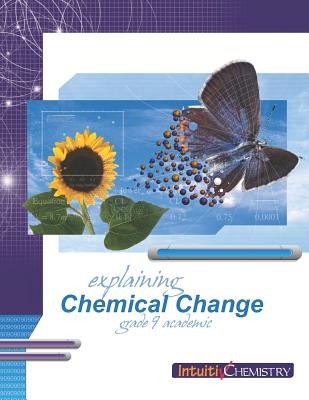
- We will send in 10–14 business days.
- Author: Jim Ross
- Publisher: Ross Lattner Educational Consultants
- Year: 2004
- Pages: 108
- ISBN-10: 1897007019
- ISBN-13: 9781897007013
- Format: 21.6 x 28 x 0.6 cm, minkšti viršeliai
- Language: English
- SAVE -10% with code: EXTRA
Reviews
Description
Take your beginning chemistry students farther than you ever imagined!
The Intuitive Chemistry books start with the traditional chemistry curriculum, and modify it in three unique ways.
- Uses the Ross model of the atom, a simplified version of the atom that "works" the way that young people think. Students can use the Ross model to make insightful explanations and accurate predictions of chemical behaviour.
- Rearranges the traditional curriculum to avoid confusion and build student competency. Competent students are confident students!
- Provides a model of science that directs the student's attention to the student's own understanding. Each experiment tests the validity of the student's own thinking.
As in all of the IntuitivScience series, diagrams are an important mode of expression. Parents and teachers, you get one half of the book! We provide solid pedagogical supports, recipes, and methods of presentation.
Informed by over thirty years of international research into how students learn science, the IntuitivChemistry series directly challenges the everyday misconceptions that students bring to your classroom. For each Student Exercise in this book there is a Parent-Teacher Guide, to help you teach your child about the periodic table.
Your student will review the composition of matter, from sub-atomic particles to solutions and mixtures.
Next, you will explore the relationship between atomic structure, chemical behaviour, and organization of the periodic table.
Finally, a brief survey of the chemical behavior of the s-block and p-block elements follows.
At the end of each section is a thorough quiz
EXTRA 10 % discount with code: EXTRA
The promotion ends in 22d.18:45:51
The discount code is valid when purchasing from 10 €. Discounts do not stack.
- Author: Jim Ross
- Publisher: Ross Lattner Educational Consultants
- Year: 2004
- Pages: 108
- ISBN-10: 1897007019
- ISBN-13: 9781897007013
- Format: 21.6 x 28 x 0.6 cm, minkšti viršeliai
- Language: English English
Take your beginning chemistry students farther than you ever imagined!
The Intuitive Chemistry books start with the traditional chemistry curriculum, and modify it in three unique ways.
- Uses the Ross model of the atom, a simplified version of the atom that "works" the way that young people think. Students can use the Ross model to make insightful explanations and accurate predictions of chemical behaviour.
- Rearranges the traditional curriculum to avoid confusion and build student competency. Competent students are confident students!
- Provides a model of science that directs the student's attention to the student's own understanding. Each experiment tests the validity of the student's own thinking.
As in all of the IntuitivScience series, diagrams are an important mode of expression. Parents and teachers, you get one half of the book! We provide solid pedagogical supports, recipes, and methods of presentation.
Informed by over thirty years of international research into how students learn science, the IntuitivChemistry series directly challenges the everyday misconceptions that students bring to your classroom. For each Student Exercise in this book there is a Parent-Teacher Guide, to help you teach your child about the periodic table.
Your student will review the composition of matter, from sub-atomic particles to solutions and mixtures.
Next, you will explore the relationship between atomic structure, chemical behaviour, and organization of the periodic table.
Finally, a brief survey of the chemical behavior of the s-block and p-block elements follows.
At the end of each section is a thorough quiz


Reviews